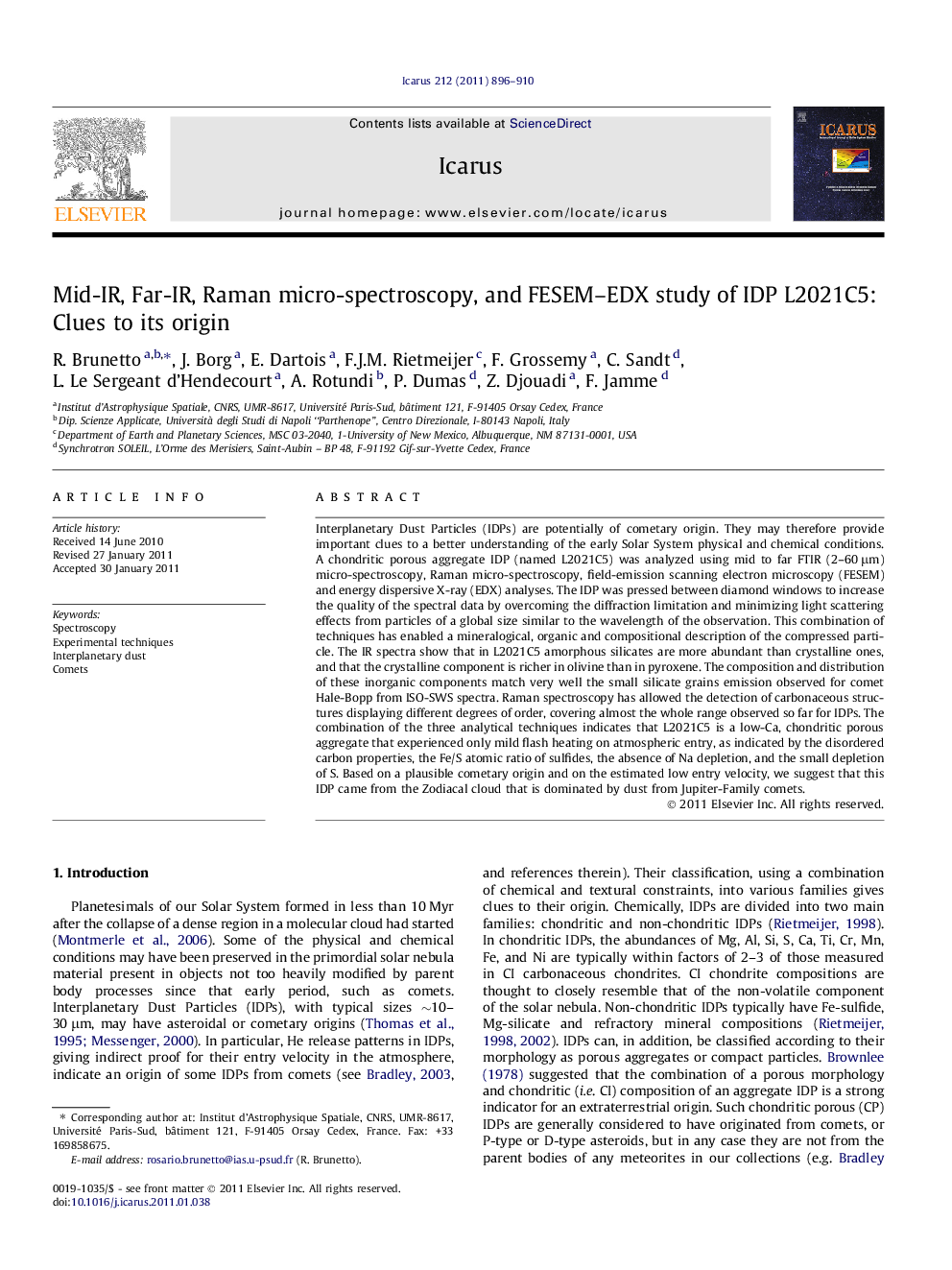| کد مقاله | کد نشریه | سال انتشار | مقاله انگلیسی | نسخه تمام متن |
|---|---|---|---|---|
| 1774611 | 1021169 | 2011 | 15 صفحه PDF | دانلود رایگان |

Interplanetary Dust Particles (IDPs) are potentially of cometary origin. They may therefore provide important clues to a better understanding of the early Solar System physical and chemical conditions. A chondritic porous aggregate IDP (named L2021C5) was analyzed using mid to far FTIR (2–60 μm) micro-spectroscopy, Raman micro-spectroscopy, field-emission scanning electron microscopy (FESEM) and energy dispersive X-ray (EDX) analyses. The IDP was pressed between diamond windows to increase the quality of the spectral data by overcoming the diffraction limitation and minimizing light scattering effects from particles of a global size similar to the wavelength of the observation. This combination of techniques has enabled a mineralogical, organic and compositional description of the compressed particle. The IR spectra show that in L2021C5 amorphous silicates are more abundant than crystalline ones, and that the crystalline component is richer in olivine than in pyroxene. The composition and distribution of these inorganic components match very well the small silicate grains emission observed for comet Hale-Bopp from ISO-SWS spectra. Raman spectroscopy has allowed the detection of carbonaceous structures displaying different degrees of order, covering almost the whole range observed so far for IDPs. The combination of the three analytical techniques indicates that L2021C5 is a low-Ca, chondritic porous aggregate that experienced only mild flash heating on atmospheric entry, as indicated by the disordered carbon properties, the Fe/S atomic ratio of sulfides, the absence of Na depletion, and the small depletion of S. Based on a plausible cometary origin and on the estimated low entry velocity, we suggest that this IDP came from the Zodiacal cloud that is dominated by dust from Jupiter-Family comets.
Research highlights
► A chondritic porous aggregate IDP was analyzed with IR (2 – 60 μm), Raman, FESEM-EDX.
► IR spectra match the small silicate grains emission of comet Hale-Bopp.
► Raman spectra detected carbonaceous structures with different degrees of order.
► Mildly heated on atmospheric entry, IDP possibly came from a Jupiter-Family comet.
Journal: Icarus - Volume 212, Issue 2, April 2011, Pages 896–910